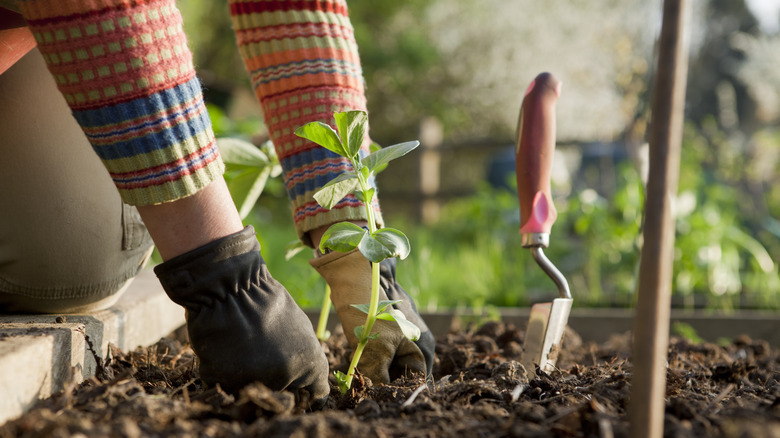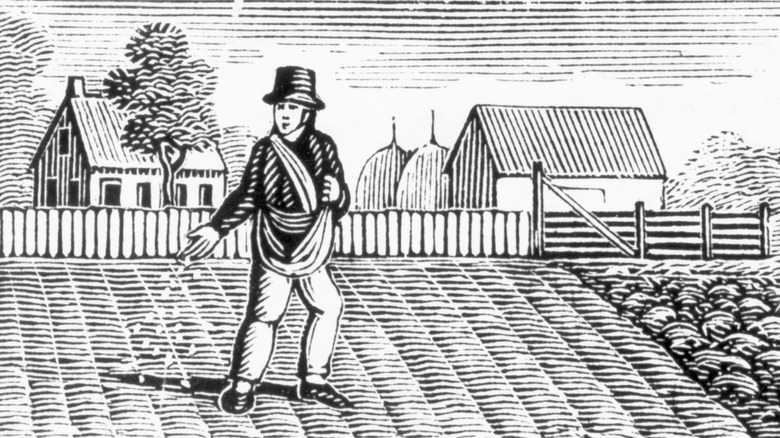Does The Old Farmer's Almanac Really Help When It Comes To Planting Vegetables?
Many diehard gardeners and planters will tell you The Old Farmer's Almanac is the gospel when it comes to their vegetable patches, swearing that the advice it gives will produce the best... well, produce. However, as time wears on, others might wonder if this book's advice still stands up to the hype.
Based on weather reports and harvest times, the Almanac relies on up-to-date and current information to guide people on when to plant their seeds, as well as when to pluck grown veggies. Their charts are applied to all different areas of the world and fine-tuned to help determine growing conditions. This makes the Old Farmer's Almanac one of the most relevant tools available, and it continues to prove its worth in the ever-changing landscape of social media and the internet.
When you buy a packet of seeds or bulbs, you purchase them with the hope that you can grow delicious vegetables to enjoy down the line. But it can be daunting to know the ideal time to plant them or when to pull pieces up. Using the Farmer's Almanac can take some guesswork out of your garden, and has done so for centuries of farmers and hobby planters alike, making it worth a gander.
How The Old Farmer's Almanac works
Whether you have a green thumb or have recently delved into growing vegetables, The Old Farmer's Almanac has been assisting people with planting times and crop pulling since 1792. This version of an almanac surpassed other editions that were available around the same time, chiefly thanks to the author's impressive predictions and studies that produced very accurate information when it came to farming and planting. Robert B. Thomas observed and noted natural patterns which helped him develop his weather predictions, and according to the official Almanac website, these are still primarily accurate — around 80% actually.
With centuries of proof that The Old Farmer's Almanac can help determine the best vegetable gardening times and practices, it's no wonder people still live by it. While Thomas' findings are still impressively close, the current staff uses weather trends and reports to help guide planters, mainly focusing on a countdown until harvests.
The website notes that seed packets usually help with suggested planting times, and the Almanac then offers tips on indoor, outdoor, and weather-based growing. It focuses on commonly found vegetables predominately, using past knowledge and information to dictate the 'days until harvest' outline.
Why it's still useful
When using the Almanac, finding information pertaining to your area is important. The manual focuses on particular zip codes and regions — if you live in a pocket that doesn't adhere to the standard climates, you need to pay attention to growing and harvest trends that the Almanac might not be able to help with. For a general guide, it's still useful for vegetable gardening, but there are always exceptions that will have you become your own expert.
On the Almanac's website, you can find a chart that labels when you should plant, fertilize, and water your 'crop,' as well as tips for cold hardiness and soil temperatures. The chart covers many popular fruits and veggies including lettuce, beans, and squash varieties. Use this as a helpful tool, which you should then combine with seed packets and your knowledge of your personal garden.


